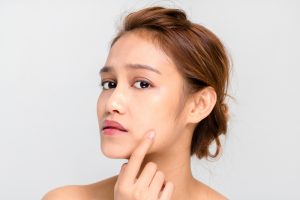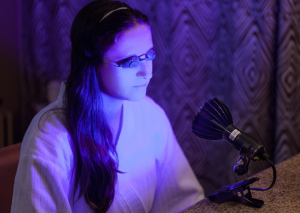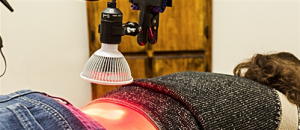What It Is…
Light therapy is a natural form of therapy that can treat a wide array of conditions and disorders through the power of light. With patience, dedication, and a schedule that fits your lifestyle, light therapy can make you feel at the top of your game at all times!
Light therapy can be used to treat mental disorders such as seasonal affective disorder, depression, insomnia, bipolar disorder, jet lag, and more. It is also used to treat physical conditions such as acne, skin rejuvenation, scar healing, chronic pain, joint and muscle pain, wound healing, and so much more. In this article, we are going to discuss how light therapy treats physical conditions. You read that right – light can cure your acne!
How It Works…
Light therapy works to treat physical conditions such as acne, skin disorders, wrinkles, chronic pain, and more by penetrating into the skin and activating specific cellular activity depending on what your body needs and which devices are being used.
When it comes to light therapy in this regard, there are a lot more options and a lot more to explain! Each condition requires a specific device as well as a specific treatment plan. However, when done right, light therapy has the power to completely change the game. Light therapy is all natural, drug-free, harm-free, and cost effective, which can make treatment for all of the following conditions much easier to endure.
Acne:
Red light and blue light therapy are the most common forms of light used to treat acne. The blue light penetrates into the skin to kill acne-causing bacteria in the pores while red light reduces inflammation and reduces the production of oils. The combination of the two is undeniable and can kick acne’s butt in no time.
Skin-Rejuvenating:
When it comes to anti-aging, wrinkles, and sun damage, light therapy is the best. Red light therapy produces elastin and collagen which prevents skin aging. It also increases circulation by relaxing the blood vessels in the specific treatment areas which allows blood to flow more easily. This helps to prevent and diminish wrinkles because increased circulation encourages the production of new skin cells.
Pain:
Light therapy is often used to treat a wide array of pain, even chronic pain, all caused by different conditions. Red Light Therapy can treat muscle pain, joint pain, herniated and bulging disks, muscle related back pain, Osteoarthritis, pulled and strained muscles, Fibromyalgia, muscle spasms, inflammation, bone fractures, chips, and sprains, nerve injuries, neck pain, neck stiffness, and more.
Red light therapy treats this long list because of its power to penetrate deep into the body and reach the tissue beneath the skin with the use of infrared lights, lamps, pads, beds, and more. Red infrared light has the power to activate cellular activity which can begin the body’s natural healing process as well as reduce inflammation which alone can cause great pain.
Wound Healing:
Did you know that red light can heal a wound 200% faster than any other treatment plan? Red and/or infrared red light therapy can close and treat a wound, even in diabetics, which is far from easy. There are quite a few ways that light therapy works to treat wounds:
- Increases circulation and the formation of new capillaries. Both of these activities allow the wounded area to receive more of the oxygen and nutrients it needs to heal.
- Increases phagocytosis which is the cleanup of dead or damaged cells which helps control infections.
- Increases lymph system activity which ensures efficient cleansing and detoxification of wounds without taking over the lymph system.
- Stimulates production of fibroblasts which synthesize collagen, elastin, and proteoglycans in final stages of healing process.
- Stimulates production of collagen which is key for closing a wound.
- Stimulates tissue granulation which forms new connective tissue and small bloods vessels on the surfaces of a wound during healing.
- Causes the release of ATP or raw cellular energy. Helps provide energy to the damaged and surrounding cells so they can do what they are meant to do and heal themselves.
Best Brands for Physical Health Light Therapy…
- ReVive Light Therapy
- Project E Beauty
- Tendilite
- Light Relief
- DPL Flex
- Philips
- Beaurer North America
- Yok Pollar





